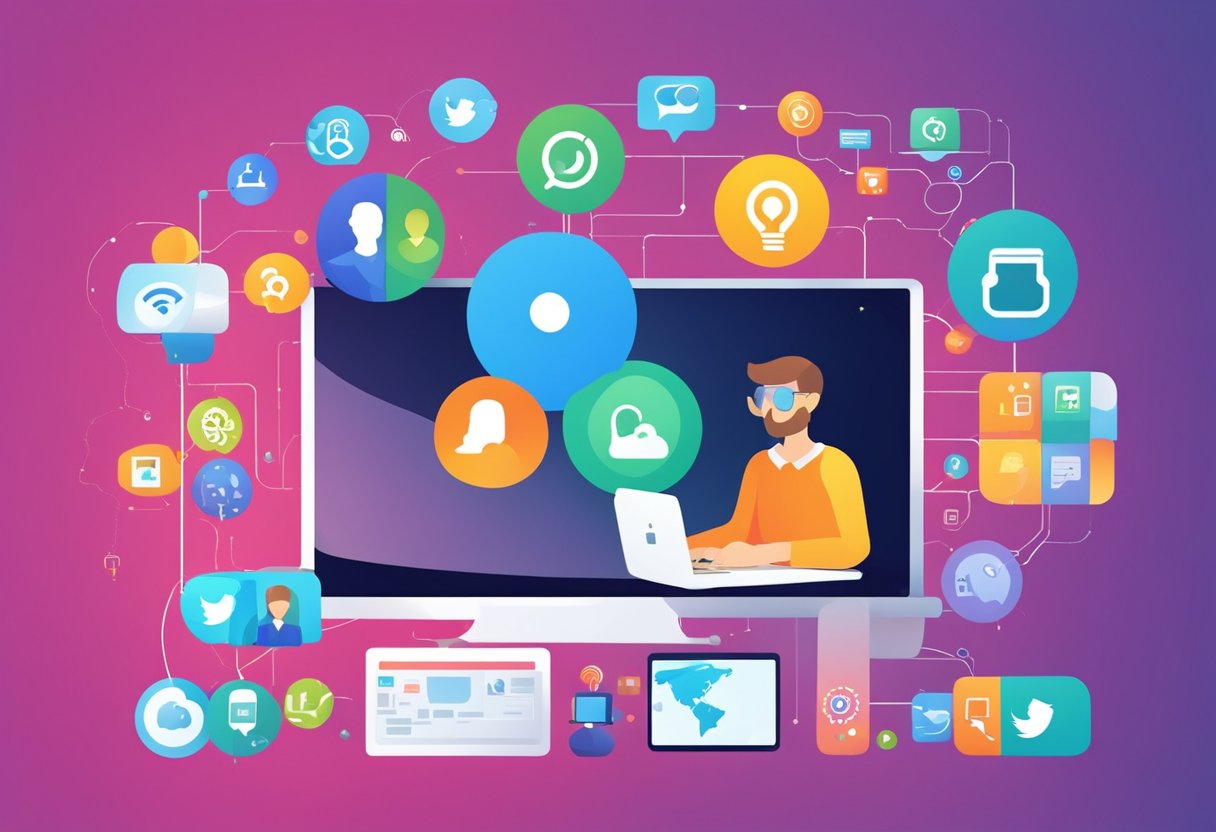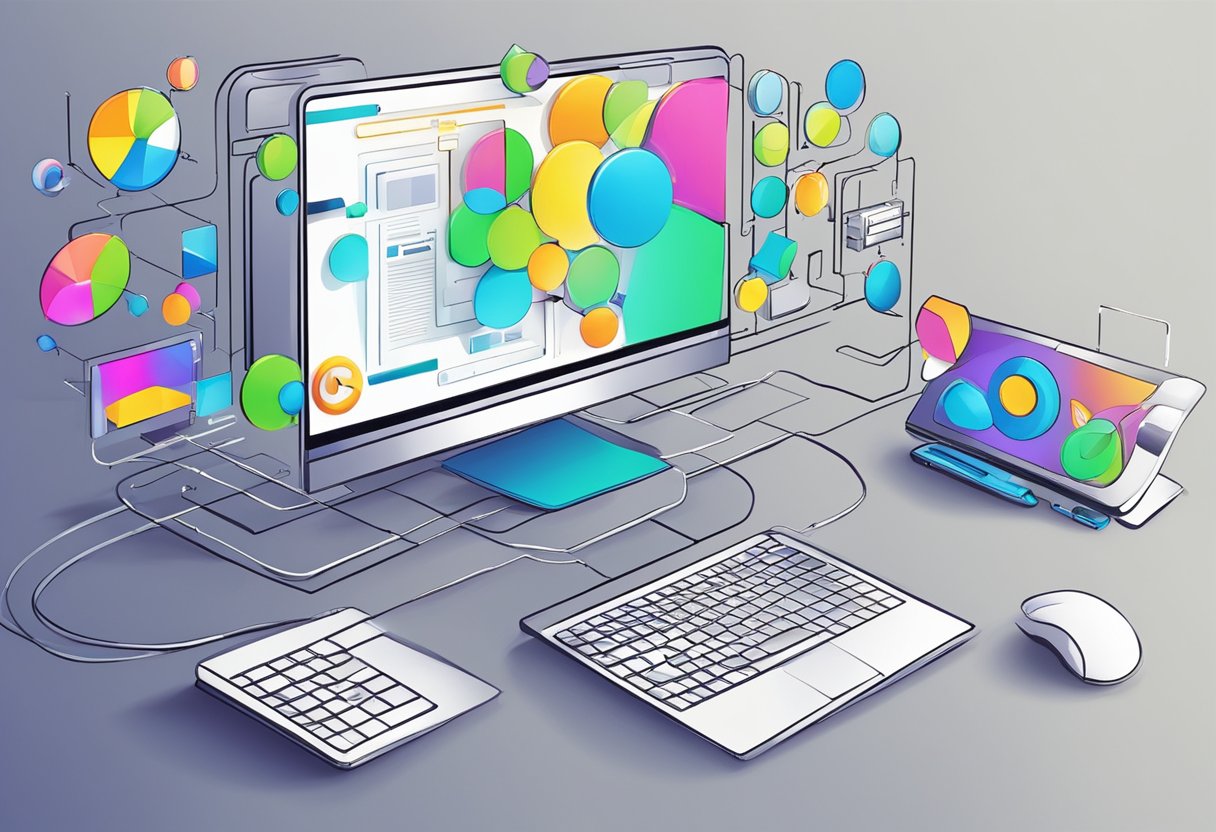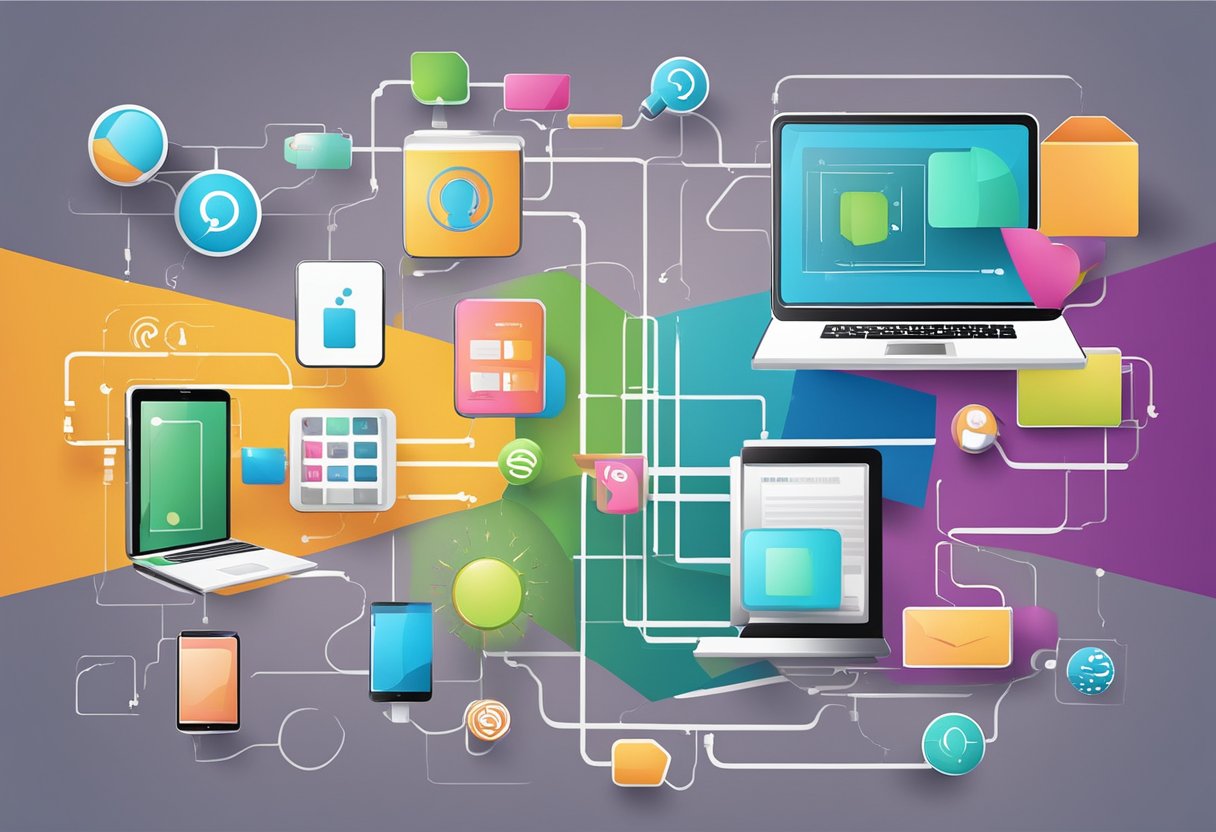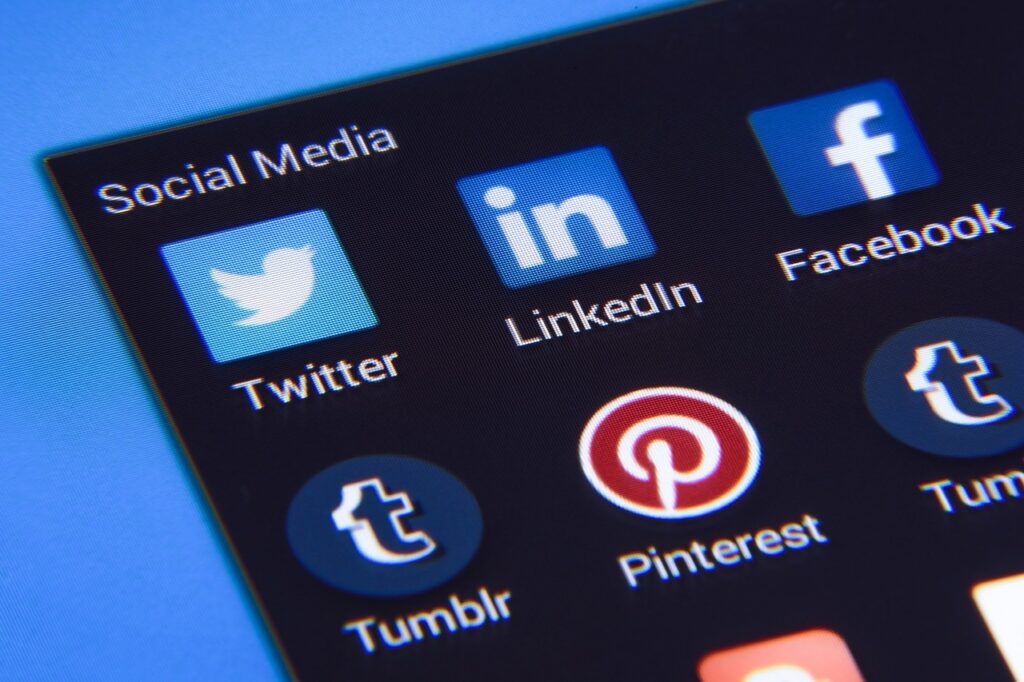Technology has revolutionized the way people communicate in the modern world. With the advent of new devices and platforms, communication has become faster, more efficient, and more accessible than ever before. From smartphones to social media, technology has transformed the way we interact with one another.

One of the most significant changes that technology has brought to modern communication is the ability to communicate and work remotely. With the rise of video conferencing and collaboration tools, people can now work together seamlessly from different locations around the world. This has not only made communication more efficient but has also opened up new opportunities for businesses and individuals to connect and collaborate on a global scale.
Another way that technology has shaped modern communication is through the proliferation of social media platforms. Social media has become a primary means of communication for many people, allowing them to connect and share information with others in real-time. Social media has also transformed the way businesses and organizations communicate with their audiences, providing new channels for marketing and customer engagement.
The Evolution of Communication
https://www.youtube.com/watch?v=avh2Ppw5wc8&embed=true
Communication has always been an essential part of human interaction. From smoke signals and messenger pigeons to telephones and email, humans have invented numerous forms of communication to keep in touch with each other. However, with the rapid advancement of technology, the methods and modes of communication have undergone a significant transformation.
From Traditional to New Media
Traditional media, such as newspapers, television, and radio, have been the primary source of information for decades. However, with the advent of the internet, new media has emerged, and the way people consume information has changed drastically. New media includes websites, blogs, podcasts, and online news sources. With the rise of smartphones and other mobile devices, people can access news and information from anywhere at any time.
The Rise of Social Media Platforms
Social media platforms, such as Facebook, Twitter, and Instagram, have revolutionized the way people communicate with each other. These platforms allow users to share their thoughts, ideas, and experiences with a global audience. Social media has also given rise to new forms of communication, such as memes, emojis, and hashtags. It has become a powerful tool for businesses and organizations to connect with their customers and stakeholders.
In conclusion, the evolution of communication has been shaped by technology. From traditional media to new media and social media platforms, the way people communicate with each other has undergone a significant transformation. As technology continues to advance, it is likely that the methods and modes of communication will continue to evolve.
Impact of Technology on Communication
https://www.youtube.com/watch?v=SvIrLC7bCjQ&embed=true
Technology has revolutionized the way people communicate with each other. The impact of technology on communication has been significant, affecting both personal and business communication. This section will explore the effects of technology on communication, including its effects on personal and business communication.
Effects on Personal Communication
The rise of technology has transformed personal communication. Devices such as mobile phones and smartphones have made it easier for people to stay connected with each other. People can now communicate with each other through various channels, including email, instant messaging, and social media. The use of these channels has made communication faster and more convenient.
One of the effects of technology on personal communication is automation. People can now use automation tools to schedule messages, emails, and social media posts. This automation has made it easier for people to communicate with each other without having to be physically present.
Another benefit of technology on personal communication is the ability to stay connected with loved ones who are far away. Video conferencing tools have made it possible for people to communicate face-to-face, even if they are in different parts of the world.
Effects on Business Communication
Technology has also had a significant impact on business communication. It has transformed the workplace, making it more efficient and collaborative. Businesses can now communicate with employees and customers through various channels, including email, instant messaging, and video conferencing.
One of the benefits of technology on business communication is automation. Businesses can now automate tasks such as sending emails, scheduling meetings, and managing customer relationships. This automation has made it easier for businesses to communicate with their customers and employees without having to be physically present.
Another effect of technology on business communication is the ability to collaborate with colleagues and clients in real-time. Video conferencing tools have made it possible for businesses to hold meetings with people in different parts of the world. This has made it easier for businesses to collaborate with colleagues and clients, regardless of their location.
In conclusion, technology has had a significant impact on communication, both personal and business. It has transformed the way people communicate with each other, making it faster and more convenient. It has also transformed the workplace, making it more efficient and collaborative. As technology continues to evolve, it will be interesting to see how it will continue to shape modern communication.
Technological Innovations in Communication
https://www.youtube.com/watch?v=galcqbVxs_k&embed=true
The evolution of technology has revolutionized the way people communicate. In recent years, technological advancements have brought about significant changes in the communication landscape. This section explores some of the emerging technologies and the role of big tech in shaping modern communication.
Emerging Technologies
Innovation in communication technology has brought about new ways of communicating. Emerging technologies such as virtual reality (VR), augmented reality (AR), and artificial intelligence (AI) are transforming communication by providing new ways of interacting. AR and VR technologies are enabling people to communicate in virtual environments, while AI-powered chatbots are being used to enhance customer interactions.
Moreover, the Internet of Things (IoT) is also transforming communication by enabling devices to communicate with each other, leading to the creation of smart homes and smart cities. The emergence of 5G networks is also expected to bring about significant changes in the communication landscape by enabling faster and more reliable communication.
The Role of Big Tech
Big tech companies such as Google, Facebook, and Amazon are playing a significant role in shaping modern communication. These companies are investing heavily in research and development to create innovative communication technologies. For instance, Google has developed Google Assistant, a voice-activated personal assistant that can perform various tasks such as setting reminders and sending messages.
Facebook has also been investing in communication technology, with the development of Messenger, a messaging app that allows users to communicate with each other. Additionally, Amazon has developed Alexa, a voice-activated personal assistant that can perform various tasks such as ordering products and playing music.
Silicon Valley, the hub of big tech companies, has been driving innovation in communication technology. With its vast resources and talent pool, Silicon Valley has been at the forefront of developing new communication technologies that are transforming the way people communicate.
In conclusion, technological innovations are shaping modern communication in significant ways. Emerging technologies such as VR, AR, AI, and IoT are transforming communication by providing new ways of interacting. Additionally, big tech companies such as Google, Facebook, and Amazon are playing a significant role in shaping modern communication. With the continued development of new communication technologies, the communication landscape is expected to continue evolving.
Privacy and Ethics in Modern Communication
https://www.youtube.com/watch?v=dn0vBnPbs10&embed=true
As technology continues to shape modern communication, there are growing concerns about privacy and ethical considerations. This section will explore these issues and provide insights into data privacy and ethical considerations.
Data Privacy
Data privacy has become a major concern for users of modern communication tools. With the increasing amount of personal data being shared online, users are becoming more aware of the need to protect their privacy. Many companies have responded by providing more robust privacy settings and terms of service agreements.
However, despite these efforts, there are still concerns about how personal data is being used and shared. Misinformation and fake news have also become major issues, with social media platforms being accused of spreading false information. As a result, many users are now more cautious about what they share online.
Ethical Considerations
In addition to data privacy, there are also ethical considerations to take into account when using modern communication tools. Users need to be aware of the impact their actions can have on others. For example, sharing personal information about others without their consent can be a breach of ethical standards.
Companies also have a responsibility to ensure that their products and services are designed with ethical considerations in mind. This includes ensuring that user privacy is protected and that personal data is not being used in ways that are harmful to users.
Overall, as technology continues to shape modern communication, it is important for users and companies alike to consider the privacy and ethical implications of their actions. By doing so, we can ensure that communication tools are used in ways that are responsible and respectful of user privacy and values.
Regulation of Communication Technology

The development and use of communication technology have led to an increase in global interconnectivity and have transformed the way people communicate. The proliferation of communication technology has led to the need for public policy and regulation to ensure the protection of national security and individual privacy.
Public Policy and Regulation
The regulation of communication technology is essential to ensure that the technology is used in a manner that is consistent with public policy objectives. Regulatory frameworks are necessary to ensure that communication technology is used in a way that is consistent with national security and individual privacy. The regulatory framework should also ensure that the technology is used in a way that is consistent with the public interest.
The Role of Policymakers
Policymakers play a critical role in developing regulatory frameworks that ensure the responsible use of communication technology. Policymakers need to be knowledgeable about the benefits and risks associated with communication technology to develop effective regulatory frameworks. Policymakers also need to be aware of the rapid pace of technological advancement to ensure that regulatory frameworks remain relevant.
Regulatory bodies also play a crucial role in ensuring that communication technology is used in a way that is consistent with public policy objectives. Regulatory bodies are responsible for enforcing regulatory frameworks and ensuring that communication technology is used in a way that is consistent with the public interest.
In conclusion, the regulation of communication technology is essential to ensure that the technology is used in a way that is consistent with public policy objectives. Policymakers and regulatory bodies play a critical role in developing and enforcing regulatory frameworks that ensure the responsible use of communication technology.
The Future of Communication Technology
https://www.youtube.com/watch?v=xosSIS3Ldyw&embed=true
As technology continues to advance at an unprecedented rate, the future of communication technology is becoming increasingly exciting. Here are some predicted developments and potential risks of the future of communication technology.
Predicted Developments
The future of communication technology is expected to be marked by significant developments in various areas, including:
-
5G Technology: The introduction of 5G technology is expected to revolutionize the way we communicate. 5G technology is set to offer faster internet speeds, lower latency, and increased network capacity, which will make it possible for more devices to be connected to the internet at the same time.
-
Artificial Intelligence: The integration of artificial intelligence (AI) in communication technology is expected to enhance communication efficiency by automating repetitive tasks, improving data analysis, and enabling personalized communication.
-
Virtual and Augmented Reality: Virtual and augmented reality (VR and AR) have the potential to transform the way we communicate by creating immersive experiences that enable users to interact with each other in virtual environments.
Potential Risks
While the future of communication technology is exciting, there are also potential risks that need to be considered. These risks include:
-
Privacy and Security: As communication technology becomes more advanced, the risk of privacy breaches and cyber-attacks increases. It is essential to ensure that communication technology is designed with privacy and security in mind to protect users’ personal information.
-
Technological Dependence: As communication technology becomes more integrated into our daily lives, there is a risk of technological dependence. This dependence can lead to a loss of social skills and a reduction in face-to-face communication.
-
Technological Unemployment: The integration of AI in communication technology could lead to job losses as machines take over tasks that were previously performed by humans. It is essential to ensure that communication technology is designed to create new job opportunities rather than eliminating them.
In conclusion, the future of communication technology is full of exciting developments and potential risks. It is essential to ensure that communication technology is designed to maximize the benefits while minimizing the risks.
Frequently Asked Questions

How has technology impacted communication in the modern world?
Technology has revolutionized communication in the modern world by making it faster, easier, and more efficient. With the advent of smartphones, laptops, and other internet-enabled devices, people can communicate with each other from anywhere in the world in real-time. Social media platforms like Facebook, Twitter, and Instagram have also made it possible for people to connect with each other instantly and share information and ideas.
What are the positive effects of technology on communication?
Technology has had several positive effects on communication. For one, it has made communication more efficient and convenient. People can now communicate with each other from anywhere in the world at any time. Technology has also made it possible for people to share information and ideas instantly, which has led to increased collaboration and innovation.
What are the negative effects of technology on communication?
Despite its many benefits, technology has also had some negative effects on communication. For instance, it has led to a decrease in face-to-face communication, which can lead to a lack of empathy and understanding. Additionally, the constant bombardment of notifications and messages can be overwhelming and distracting, leading to decreased productivity and increased stress.
What are some examples of communication technology?
There are many examples of communication technology, including smartphones, laptops, tablets, social media platforms, video conferencing software, and instant messaging apps. These technologies have made it possible for people to communicate with each other from anywhere in the world in real-time.
What are the top 5 ways technology has changed the communication field?
The top 5 ways technology has changed the communication field are:
- Increased efficiency and convenience
- Increased collaboration and innovation
- Increased globalization and cultural exchange
- Decreased face-to-face communication
- Increased reliance on digital communication
How important is technology in modern communication?
Technology is extremely important in modern communication. It has made communication faster, easier, and more efficient, and has facilitated increased collaboration and innovation. Without technology, modern communication would be much slower and less convenient.

